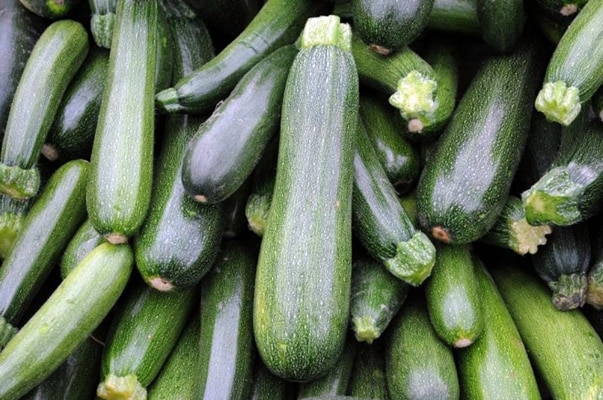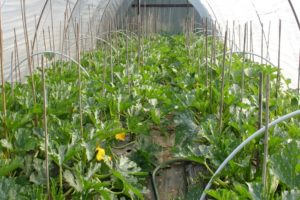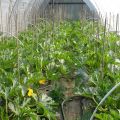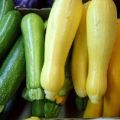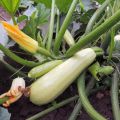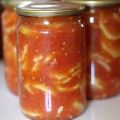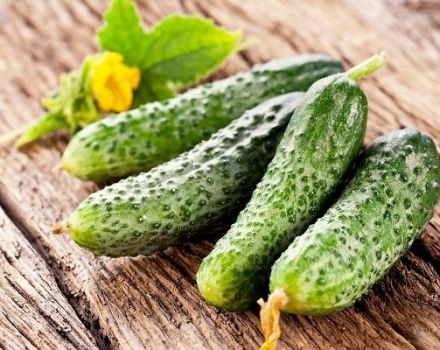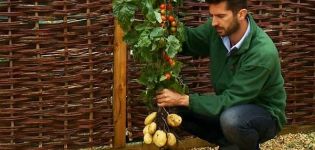Description of the Tsukesha zucchini variety, cultivation and storage features
Green-fruited squash is becoming very popular. So, Tsukesh zucchini is chosen for cultivation because it is distinguished by early fruiting and tasty, delicate pulp. There will be no problems in the cultivation of vegetables. The variety is unpretentious and undemanding to care for. And the harvested crop can be used for cooking delicious dishes and for canning for the winter. And how much benefit will marrow bring to the human body!
Description of the variety
Tsukesha refers to zucchini zucchini, which are used in dietary and baby food. Delicate fruits contain a lot of vitamins, trace elements: potassium, magnesium, calcium, zinc.
In order to properly grow zucchini, you need to know everything about the structure and characteristics of the vegetable crop. The plant of the Pumpkin family is compact, does not have long lashes. Tsukeshi's leaves are large, dissected with an interesting color: there are silvery spots on a green background. The surface of the sheet plate is hard to the touch. Plenty of landing space varietal type of zucchini will not take. And the harvests from the bush are high. After the appearance of female and male flowers of bright orange color, fruits are tied. Young zucchini are long with a delicate, thin skin of green color. As it grows, the skin begins to coarse and turn yellow.
The optimal sizes of zucchini varieties are 30 centimeters in length and 10 in width. The mass of one fruit reaches 1 kilogram.
The Tsukesha variety is distinguished by its excellent presentation and good transportability. Fruits have few seeds when picked unripe. At this moment, the zucchini are the most delicious. They can be stored until mid-winter, but the skin will become rough and very difficult to peel from it.
Growing
Begin planting zucchini by choosing a place. Usually summer residents leave the planting of culture for the last. Where there is an empty space, Tsukeshi seeds are planted there. This can be a site near a fence or a backyard of a vegetable garden overgrown with grass. Zucchini will take root everywhere. You just need to dig up the soil, make holes and plant seeds. Alternatively, they choose to plant on a pile of compost, sprinkling it with soil on top.
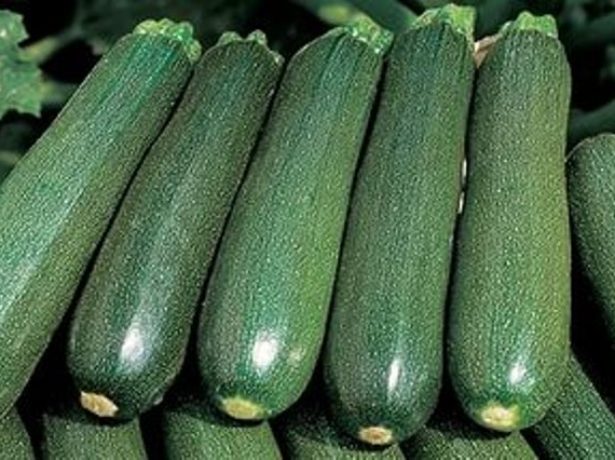
Zucchini do not grow well in the shade, they do not like places with stagnant moisture. Otherwise, they are picky. But when you want to get more fruits, in the fall they dig up a plot for a crop, add 1 square meter to a bucket of humus and 0.5 liters of wood ash. Instead of humus, urea is used - 50 grams.
Vegetable precursors can be cabbage, beans, peas, onions and garlic. You can not plant a vegetable after pumpkins, cucumbers, melons and gourds. The corn scenes sown nearby will help protect the plants from cold winds, heat the soil during a period of lower air temperatures. Rows of legumes next to squash beds will be able to saturate the soil with nitrogen.Indeed, without this substance, Tsukesha will develop poorly.
Zucchini seeds can be germinated before planting. Then shoots will appear faster. The seed is hardened by placing it in a refrigerator on the bottom shelf and disinfected with a solution of potassium permanganate. A heat-loving plant will be able, after such treatment, to endure weather disasters without prejudice to the vegetation.
Scheme for planting seeds Tsukeshi 50x70 centimeters. In one hole, 3–4 centimeters are buried, 2 seeds each. After all, not always all seeds germinate. To better grow zucchini, add wood ash and humus to each hole when planting.
It is advised to grow heat-loving plants in seedlings. In early April, germinated seeds are planted in plastic cups with nutritious and loose soil. On the basis of 4 real leaves, you can transplant them to the beds in the garden. Seedlings are deepened to seven-lobed leaves. After planting, the vegetable sprouts are well moisturized.
To retain moisture in the soil, you can mulch the squash bushes with a layer of peat or straw 7-10 centimeters thick.

Care features
The description of caring for Tsukesh zucchini includes the fact that they:
- watered abundantly;
- feed;
- thin out the leaves;
- weed.
Zucchini always needs moisture. Water is required in abundance for juicy green leaves of large size, fruits. If the plantings are mulched with straw or dry grass, then the soil remains moist for a long time. As soon as it dries up, it's time for watering. Up to 10 liters of water is poured under the bush. It is better to moisten the zucchini at the root. But in a hot summer, the plant will not refuse a refreshing shower. Don't forget about the water temperature for Tsukeshi. It shouldn't be cold. The water temperature for zucchini at 20 degrees is considered optimal. Since the leaves cover the ovary of the fruit, excessive moisture inside the bush will lead to rotting of the pumpkins.
Make fertilizer for vegetable bedsif the soil is not fertilized. More nitrogenous fertilizers are required than others, but an overabundance of the substance will lead to the absence of ovaries or decay. Then you can't wait for the fruits. Moderately fed with organic matter, not using fresh manure. And during the fruiting period, it is better to add wood ash under the bushes. Ash is scattered under the bushes and loosened, embedding fertilizer in the ground. In this case, the soil must be moist.
The best fertilizer for planting zucchini will be mullein, diluted in a ratio of 1: 6 or bird droppings - 1:12. Summer residents also use infusion of green weeds. Weed stems and leaves are put in barrels. After 1-2 weeks the natural fertilizer is ready. Add 2 liters of infusion to a bucket of water and water the plant bushes.
To prevent the zucchini leaves from rotting, the pruning shears remove those that lie on the ground. For 1 procedure, 2-3 sheets are removed. In addition, it is necessary to trim the leaves that shade the growing point from above. After thinning, access to the flowers will be open to the pollination bees.
Weed vegetable bushes as weeds grow. This usually has to be done before the zucchini is in effect. Then the adult plants will cope with the weed by themselves, crushing it.

Advantages and disadvantages
The pluses of the Tsukesha variety include such characteristics that indicate that the zucchini:
- ripens early, 45 days after germination;
- produces fruits with delicate pulp and pleasant taste;
- from a square meter will give up to 12 kilograms of fruit;
- does not require pollination;
- versatile in use;
- unpretentious in terms of climatic conditions.
Tsukeshi's disadvantages appear only when the zucchini reaches maturity. Then the fruits will be with voids inside, a lot of seeds. And it is difficult to cut such a fruit because of the thick rind.
Pests and diseases
Among the pests that attack zucchini are aphids and spider mites.When a tick appears, it is found by cobwebs on the lower part of the leaves. They urgently take measures to destroy the pest by spraying the bushes of the plant with an infusion prepared from chopped onion heads, a tablespoon of black pepper in a bucket of water. You can add 2-3 tablespoons of wood ash to enhance the effect, for better adhesion of the product - 1 tablespoon of shavings of laundry soap. Zucchini is sprayed twice with a break of 7-10 days.
Aphids are fought by treatment with a solution of Karbofos. And the whitefly is destroyed by spraying the zucchini of Tsukesh with the drug Confidor or Phosbecid.
For young seedlings of zucchini, a sprout fly is dangerous, climbing inside the stems, having a detrimental effect on the growth and development of vegetable crops.
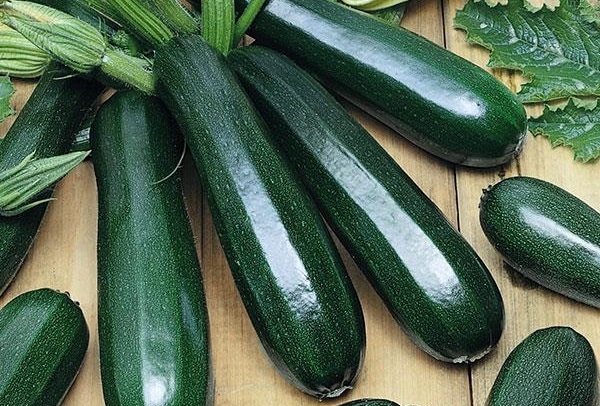
To prevent the pests from destroying the plants, it is necessary to carefully prepare the area for planting zucchini, digging it up, applying fertilizer. When planting, you do not need to plant seeds deep into the ground. Seedlings are attacked by pests, their larvae are more likely if the seeds are placed at a depth of 6 centimeters.
Although diseases rarely affect a vegetable plant, an infection can be found in zucchini:
- anthracnose;
- powdery mildew;
- gray rot.
Symptoms of diseases are found on leaves and fruits. The course of infection ends with decay of zucchini.
Proper cultivation of zucchini will help to avoid diseases. A vegetable cannot be planted in one place every year. Weeds are carriers of fungal spores, so you need to get rid of them by regularly weeding the beds with zucchini. If the disease is found, then the plants are sprayed with a solution of colloidal sulfur or fungicidal preparations.
Harvesting and storage
Zucchini is harvested several times per season. For consumption during the summer, they pluck young tender zucchini, which have reached a mass of 0.5 kilograms. For harvesting for the winter, more mature zucchini are used. There will still be some seeds in them, and the pulp will remain juicy and tasty. Zucchini caviar is prepared from it. Housewives use the vegetable for pickling, preparing various winter salads.
To grow zucchini for storage, leave 2-4 ovaries after picking the last fruits.
Then they wait for them to mature. Ripe pumpkins can be picked in mid-August. Collect them in dry weather. Cut off the fruit with a small tail. Zucchini is wiped with a dry cloth from dirt and dust. The crop is stored in the basement at temperatures up to 5 degrees above zero or in the refrigerator on the bottom shelf. Fruits are well preserved in a box, which is placed in a closet or under a sofa. During the winter, you can cook various dishes from zucchini, getting the full vitamins the body needs.
